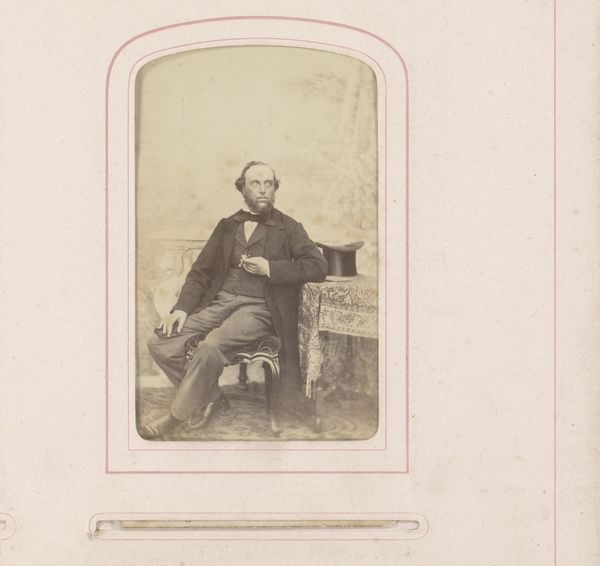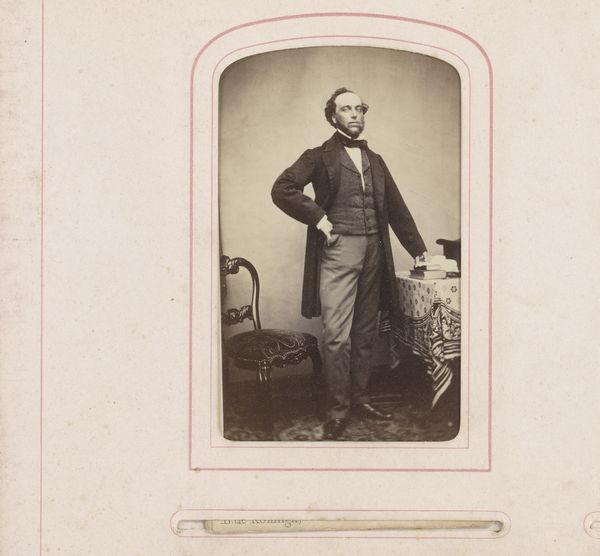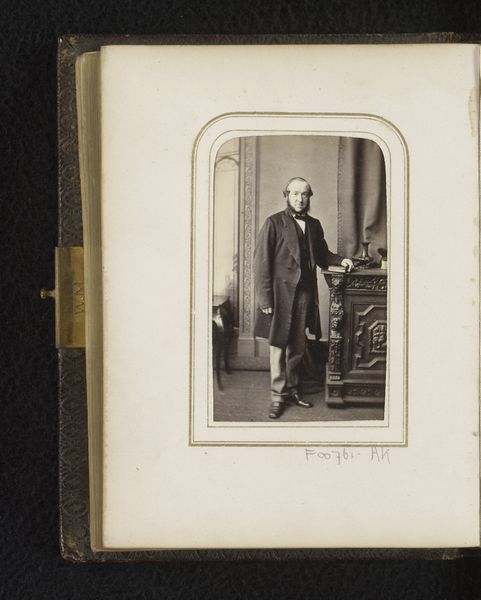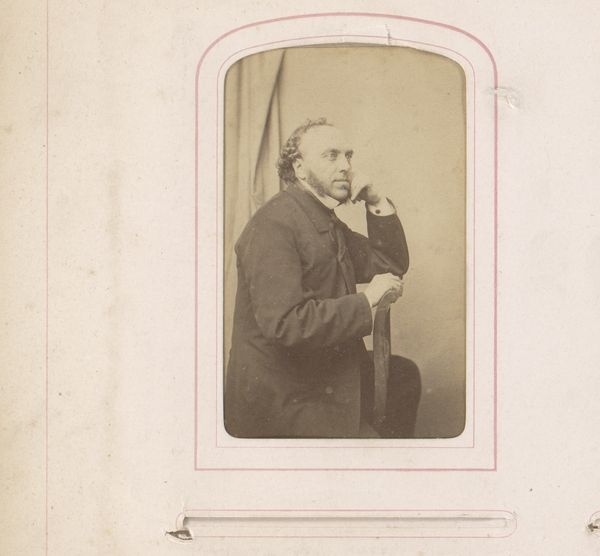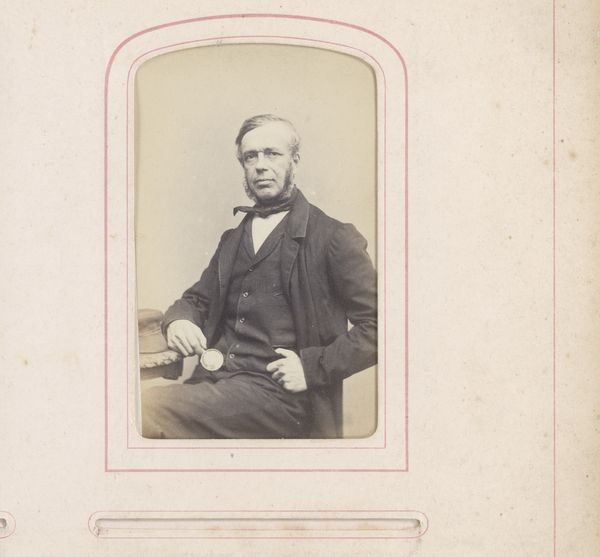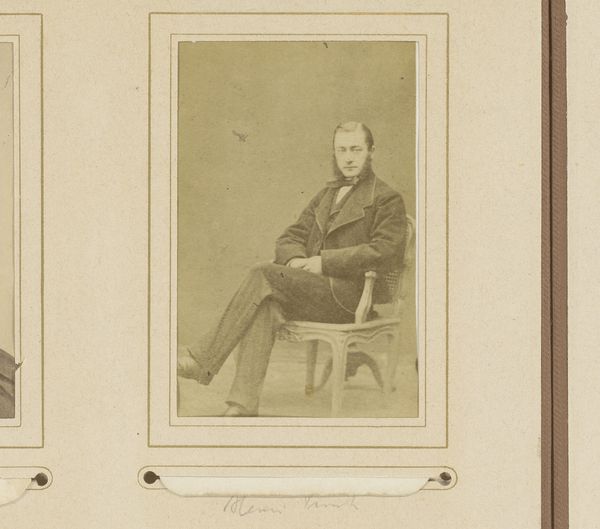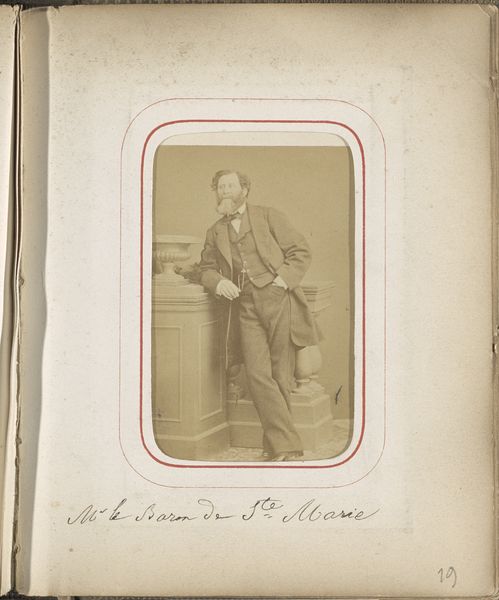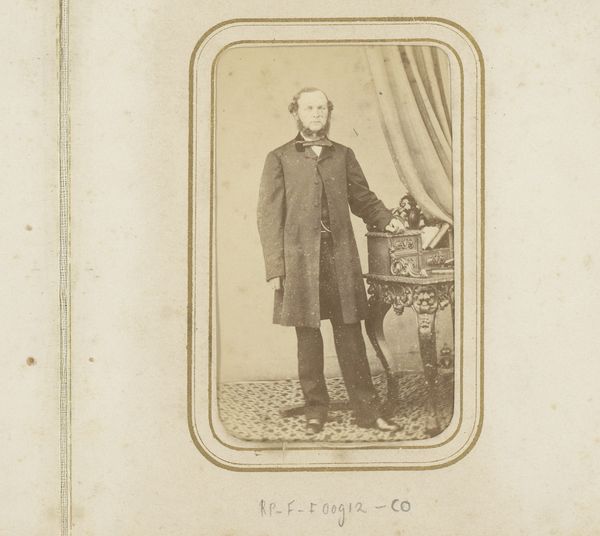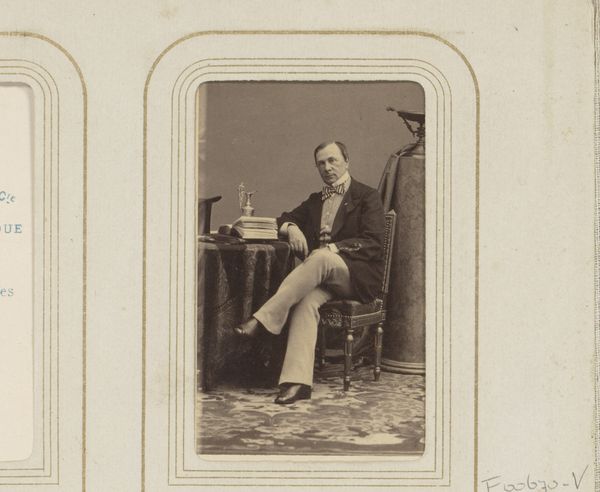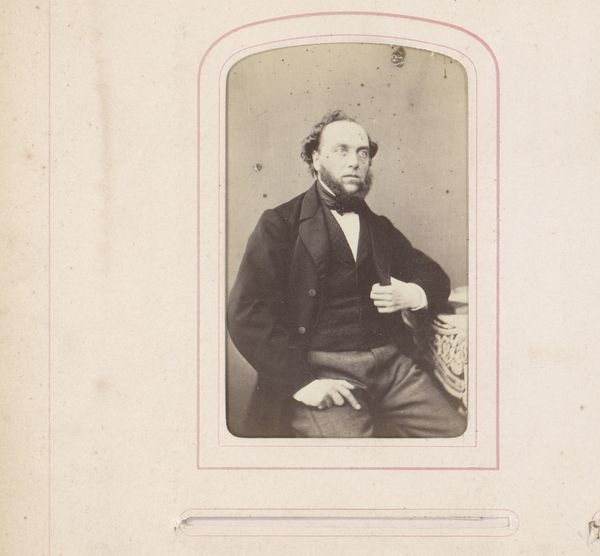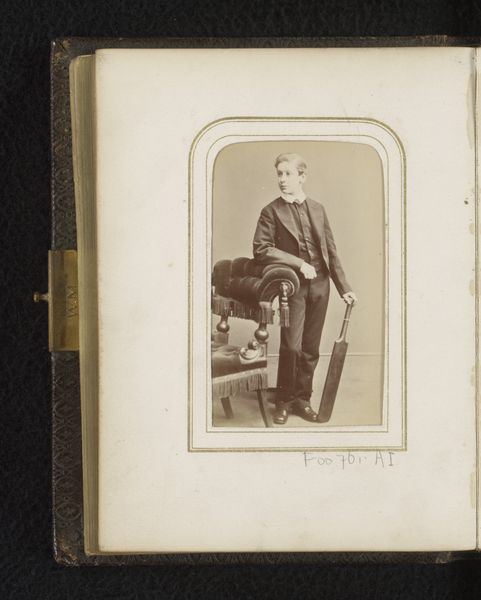
Portret van Bastiaan de Greef staand bij een piëdestal met hoed en stok 1864 - 1879
0:00
0:00
daguerreotype, photography
#
portrait
#
16_19th-century
#
vintage
#
daguerreotype
#
photography
#
old-timey
#
19th century
Dimensions: height 104 mm, width 59 mm
Copyright: Rijks Museum: Open Domain
Curator: This daguerreotype, taken between 1864 and 1879, is titled "Portret van Bastiaan de Greef staand bij een piëdestal met hoed en stok"—"Portrait of Bastiaan de Greef Standing by a Pedestal with Hat and Stick." Editor: Wow, what a perfectly captured slice of Victorian life! He looks so serious, like he's posing for his own monument, perhaps! I can almost hear the click of the camera, the hushed stillness of the studio… Curator: Absolutely, and it's precisely that staged quality which provides valuable insight. Consider the symbolic implications here: a man positioned next to a pedestal, complete with his hat deliberately placed atop it. De Greef's coat and cane serve as external markers of wealth and status, carefully crafted within the performance of the photograph itself. Editor: That hat! I find the placement almost comical, like a little throne for headgear. Did people really take themselves this seriously back then, or is this an act, a theatrical exaggeration of importance? Curator: The question of sincerity versus performance is always vital. Photographic portraits were expensive, they often reinforced established power dynamics. De Greef's pose suggests an embrace of conventional masculinity and social hierarchy. However, it is equally useful to view it alongside critiques of the period emerging through literature, art and activism, to explore underlying anxieties concerning social mobility, and changing expectations of gender. Editor: He almost seems uncomfortable, trapped within the frame—a far cry from the carefree Instagram snapshots of today! And the sepia tones add to the melancholic charm, don’t they? A hint of bygone days, reminding us how much – and how little – changes! Curator: It’s fascinating to examine how portraits of this era played a role in reinforcing or questioning prevailing social norms. By analyzing details of costume, pose, and setting, we can gain a better grasp on the visual language of the period, and more accurately assess the cultural and political influences affecting representations of gender, race and class. Editor: You know, seeing him like this, all stiff and proper, makes me wonder about the real man underneath. Was he as imposing as the portrait suggests, or did he crack jokes and tell silly stories around the dinner table? We’ll never truly know, and maybe that’s the beauty of it! Curator: Perhaps. I find the enduring relevance lies in photography's power, since its inception, to shape identity. Editor: Definitely, each brushstroke, each pose – they are always speaking volumes!
Comments
No comments
Be the first to comment and join the conversation on the ultimate creative platform.
